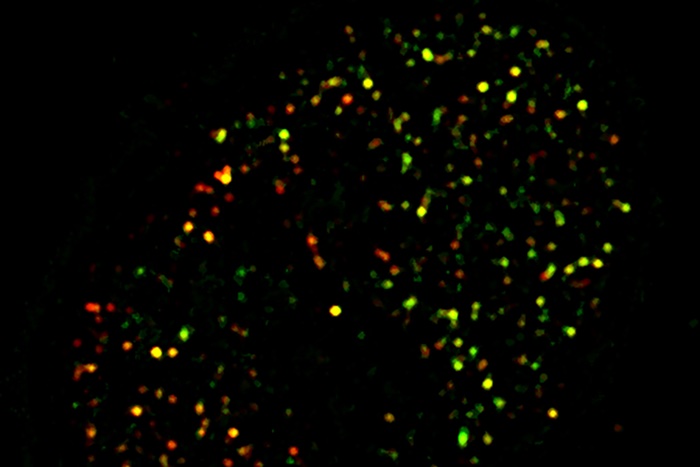People with obesity have an increased risk of developing diabetes, but exactly how that happens is not fully understood. Now, a new study at Washington University School of Medicine in St. Louis demonstrates how obesity can contribute to diabetes and may provide a therapeutic target to help prevent or delay diabetes in some of those at risk.
The study, “Palmitoylation couples insulin hypersecretion with beta cell failure in diabetes,” is published in Cell Metabolism.
“Between 30 million and 40 million people in the United States have type 2 diabetes, and another 90 million to 100 million have risk factors that make them likely to develop type 2 diabetes in the future,” explained senior investigator Clay F. Semenkovich, MD, director of the division of endocrinology, metabolism & lipid research at the School of Medicine. “Many at risk for diabetes have elevated levels of insulin, a hallmark of insulin resistance and a signal that means trouble may be brewing. If we could intervene before they actually develop diabetes, we might be able to prevent significant health problems—such as heart disease, chronic kidney disease, nerve damage, vision loss, and other problems—in a great number of people.”
Studying human tissue samples, Semenkovich, who is also the Irene E. and Michael M. Karl professor; first author Guifang Dong, PhD, a senior scientist; Xiaochao Wei, PhD, an associate professor of medicine; and other Washington University researchers found that the overproduction of insulin involves a process called palmitoylation. This is the process by which cells attach the fatty acid palmitate to proteins.
“They hyper-secrete insulin because this process goes awry, and they can’t appropriately regulate the release of insulin from beta cells,” Semenkovich explained. “Regulating insulin release is controlled in part by this palmitoylation process.”
The research team also genetically engineered a mouse that was deficient in the enzyme called APT1, an enzyme responsible for palmitate removal from proteins. The engineered mice went on to develop diabetes.
Because impaired APT1 function contributed to diabetes risk, the researchers worked with the university’s Center for Drug Discovery to screen and identify compounds that can increase the activity of the APT1 enzyme.
“We’ve found several candidate drugs, and we’re pursuing those,” Semenkovich said. “We think that by increasing APT1 activity, we might reverse this process and potentially prevent people at risk from progressing to diabetes.”
“There are several ways that type 2 diabetes may develop,” he said. “This enzyme is not the answer, but it’s an answer, and it appears we have some promising tools that might keep some people with prediabetes from developing diabetes.”



